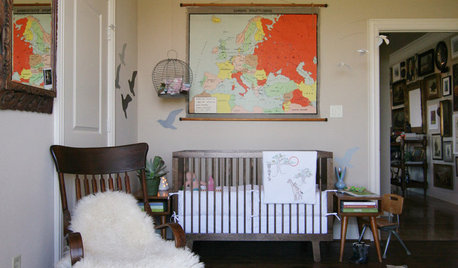Will Bing and Utah Giant Cherries Pollinate each other
dgsgardens
16 years ago
Related Stories

EDIBLE GARDENSHow to Grow Your Own Luscious Cherries
Nope, they’re not the easiest fruit to grow. But with spectacular blossoms and pies as possibilities, cherries are sure worth a try
Full Story
EDIBLE GARDENSSummer Crops: How to Grow Tomatoes
Plant tomato seedlings in spring for one of the best tastes of summer, fresh from your backyard
Full Story
DECORATING GUIDES10 Popular Home Design Trends — Timely or Timeless?
Weigh in on whether these of-the-moment decorating elements will have staying power or become a memory of these times
Full Story
EDIBLE GARDENSHow to Grow 10 Favorite Fruit Trees at Home
Plant a mini orchard in fall, winter or early spring to enjoy fresh-off-the-tree fruit the following year
Full Story
BEFORE AND AFTERSSee 6 Yards Transformed by Losing Their Lawns
Wondering whether a turf lawn is the best use of your outdoor space? These homeowners did, and they found creative alternatives
Full Story
GARDENING GUIDES6 Plants That Beat Butterfly Bush for the Wildlife Draw
It's invasive, a nonnative and a poor insect magnet. Check out these better alternatives to butterfly bush in the garden
Full Story
GARDENING FOR BUTTERFLIESGarden for Wildlife to Reap Rich Rewards
When you plant with animals and insects in mind, you make gardening easier, the planet healthier and yourself more present
Full Story
EDIBLE GARDENSHow to Grow Your Own Sweet Summer Crops
This guide will help any gardener get started on growing the freshest warm-season veggies and berries for summer
Full Story
GARDENING GUIDESBackyard Birds: Invite Entertaining Hummingbirds Into Your Garden
Hummingbirds — unique to the Americas — zip through open landscapes seasonally or year-round. Here’s how to attract them
Full Story
LANDSCAPE DESIGN15 Great Ideas for a Lawn-Free Yard
End the turf war for good with hardscaping, native grasses and ground covers that save water and are easier to maintain
Full StoryMore Discussions







joereal
dgsgardensOriginal Author
Related Professionals
Jennings Landscape Architects & Landscape Designers · Leawood Landscape Architects & Landscape Designers · San Juan Landscape Architects & Landscape Designers · Aurora Landscape Contractors · Springfield Landscape Contractors · Andover Landscape Contractors · Athens Landscape Contractors · Camp Verde Landscape Contractors · Crystal Landscape Contractors · Gallatin Landscape Contractors · Goodlettsville Landscape Contractors · Hampton Bays Landscape Contractors · Newberg Landscape Contractors · North Highlands Landscape Contractors · Sammamish Landscape ContractorsdgsgardensOriginal Author
dgsgardensOriginal Author
carolync1
ca_cherry_grower
joereal
dgsgardensOriginal Author
ca_cherry_grower
edlo
joereal
dgsgardensOriginal Author
joereal
dgsgardensOriginal Author
joereal
ca_cherry_grower
joereal
ca_cherry_grower